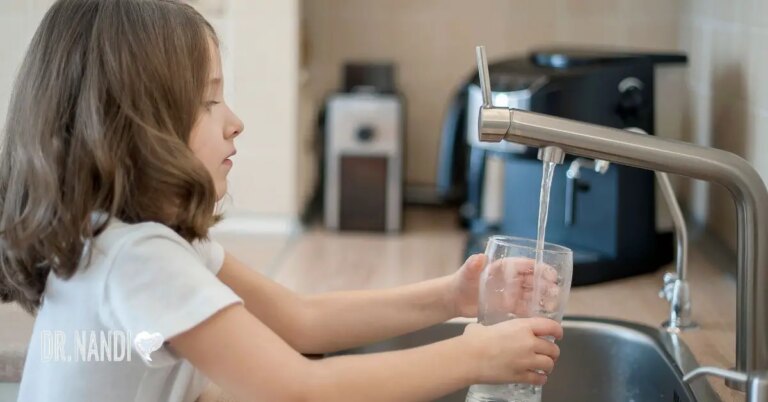Emotional availability is the thread that weaves intimacy and connection into the tapestry of relationships, transforming simple interactions into deep, meaningful exchanges. It’s about more than just being physically present with our partners; it’s about opening our hearts, sharing our vulnerabilities, and genuinely being there for each other through life’s ebbs and flows. Yet, what unfolds when one partner stands at the edge of emotional engagement, not out of willful neglect but from an unseen barrier of emotional unavailability?
This hidden barrier is not always easy to recognize. Its signs are subtle, woven into daily conversations and interactions, often unnoticed but deeply felt. Emotional unavailability is not just an unwillingness to share feelings or commit to a relationship; it is an intricate dance of closeness and distance, where the steps are sometimes unknown even to the dancer. The nuanced phrases and the silences speak volumes in the spaces between words where the heart’s true language lies hidden.
Our journey today takes us into the heart of emotional unavailability, exploring its silent signals and the shadows it casts on relationships. With curiosity as our compass, we embark on a path of understanding and compassion, seeking not just to uncover the signs of emotional unavailability but to illuminate the paths toward more profound connection and shared growth. Join me as we delve into the essence of emotional availability, unraveling its mysteries and discovering how to bridge the distance, ensuring that no one feels alone or misunderstood in their most intimate connections.
Understanding Emotional Unavailability
At its core, emotional unavailability describes a state in which an individual is unable or finds it difficult to share their emotions or fully engage in an intimate relationship. This isn’t about deliberately keeping secrets or intentionally pushing someone away. Instead, it’s a more complex situation in which a person struggles to let their guard down, be vulnerable, and connect on a deeper emotional level.
What leads to emotional unavailability? It’s a question with many answers, each as unique as the individuals facing this challenge. For some, the roots trace back to childhood, to environments where expressing feelings was discouraged or not modeled by caregivers. Growing up in such settings can leave individuals ill-equipped to manage and share their emotions in adulthood. They might find themselves at a loss for how to express love, sadness, or frustration, resorting instead to silence or superficial engagement.
Others might have erected emotional walls in response to past hurts. Betrayals, heartbreaks, or traumas can teach harsh lessons about vulnerability, leading some to conclude that the safest heart is hidden. While an emotional fortress defends against further pain, it also keeps out the connections that could heal and fulfill them. [1]
Understanding emotional unavailability requires us to look beyond the surface to see the what and the why. It’s about recognizing the invisible struggles and the silent cries for help beneath dismissive shrugs or diverted eyes. By shedding light on these underlying causes, we see emotional unavailability not as a personal failing but as a call for empathy, patience, and gentle encouragement toward openness.

The Impact of Emotional Unavailability on Relationships
Emotional unavailability doesn’t just affect the person who struggles with it; it sends ripples through their relationships, often in ways that are profound yet hard to articulate. Below are key areas where its impact is most deeply felt:
- Limited Emotional Connection: When one partner is emotionally unavailable, it can feel like an invisible barrier between them and their significant other. This barrier prevents deep understanding and intimacy, leaving the other partner feeling isolated and emotionally unsatisfied. The relationship may seem superficial because the emotional depth that bonds people is lacking.
- Communication Breakdown: Open, heartfelt communication is the lifeline of any healthy relationship. However, when emotional unavailability enters the scene, attempts at meaningful conversation can feel like speaking to a wall. The emotionally unavailable partner might avoid discussions about feelings, leading to frustration and an increase in arguments over seemingly minor issues, masking the real underlying problem. [2]
- Trust Issues: Trust grows from understanding and predictability in a relationship. If one partner consistently hides their feelings or seems disconnected, it becomes difficult to build trust. The other partner may start to question their partner’s commitment, care, and even fidelity as they struggle to understand the reasons behind their emotional distance.
- Loneliness: Perhaps one of the most painful repercussions is the profound sense of loneliness both partners can experience. The emotionally available partner might feel alone even when their significant other is physically present, trapped by a desire to connect but unsure how to bridge the emotional divide. Conversely, the emotionally unavailable partner might feel misunderstood or pressured, compounding their withdrawal.
Understanding these impacts is crucial for recognizing the signs of emotional unavailability in a relationship and fostering compassion for both partners. It’s about seeing the struggle behind the symptoms and the person behind the patterns and finding ways to gently navigate these challenges together.
10 Signs of an Emotionally Unavailable Partner
Recognizing emotional unavailability in a partner often requires attention to what they say, how they say it, and sometimes, what they don’t say. Here are ten statements that, though they may seem harmless on the surface, can indicate more profound emotional barriers:
- “I’m not good at relationships.” This may sound like modesty or self-awareness, but it often pre-empts excuses for not investing emotionally, setting the stage for a relationship where a deeper connection is always out of reach.
- “I don’t want to talk about it.” While everyone needs space sometimes, consistently shutting down conversations about feelings or the relationship creates a chasm between partners, leaving one feeling isolated and the other hidden.
- “You’re too emotional.” This deflects attention from their emotional unavailability by critiquing the other’s emotional expressions, suggesting that the problem lies not in the lack of emotional sharing but in the other’s response to the void.
- “I need space.” Although personal space is healthy, using it as a frequent barrier to intimacy suggests discomfort with emotional closeness rather than a simple need for solitude.
- “I’m just focusing on myself right now.” Self-improvement is commendable, but when it consistently excludes emotional availability to a partner, it hints at a reluctance to integrate lives meaningfully.
- “You shouldn’t feel that way.” This invalidates the partner’s feelings and sidesteps engagement with the emotional content, essentially blocking a path to understanding and intimacy.
- “Let’s not label this.” Aversion to defining a relationship often reflects a deeper unease with commitment and its emotional responsibilities.
- “I don’t know what I want right now.” Indecision can be a stalling tactic, maintaining emotional distance by keeping the relationship’s future ambiguous and uncommitted.
- “I’m not ready for a serious relationship.” Even if they enjoy the companionship, this outright declaration signals an unwillingness to dive deeper emotionally, keeping the partnership at arm’s length.
- “You’re making a big deal out of nothing.” Minimizing concerns dismisses the partner’s needs and feelings, avoiding genuine engagement over issues that require emotional openness.
Each of these statements can be a window into the emotional landscape of a partner who struggles with availability. Recognizing them is the first step toward understanding and addressing the barriers to deeper connection.

Strategies for Dealing with Emotional Unavailability
Navigating a relationship with an emotionally unavailable partner can be challenging, but understanding and strategic approaches can make a significant difference. Here are some strategies to consider:
Approach with Empathy
Understanding that emotional unavailability often stems from past hurts or learned behaviors is crucial. Approach your partner with empathy, recognizing their struggles without judgment. Instead of accusations, use “I feel” statements to express how their behavior affects you, creating a safer space for open communication.
Maintain a Balance with Self-Care
While it’s natural to want to break through your partner’s emotional walls, it’s essential to maintain your emotional health. Establish boundaries to protect your well-being, and invest time in activities and relationships that nourish you to ensure you’re not depleting your emotional reserves.
Open Dialogue
Initiate honest conversations about your relationship dynamics, focusing on how you can contribute to a more emotionally open partnership. Encourage your partner to express their feelings and assure them that you will understand and care for their vulnerabilities.
Seek Professional Help if Necessary
If the emotional distance in your relationship creates significant stress or unhappiness, consider seeking help from a therapist or counselor. Professional guidance can offer both partners tools to navigate their emotional landscapes and strategies for building a more connected relationship.
Set Realistic Expectations
Change takes time, especially when it involves deep-seated emotional patterns. Be patient with your partner and yourself, recognizing that progress may be slow. Celebrate small victories and remain supportive as you both work towards a more emotionally open relationship.
Decide on the Next Steps Based on Progress
Regularly assess the health and progress of your relationship. If efforts to improve emotional availability are not leading to meaningful change, it may be necessary to consider more significant decisions about the relationship’s future. Prioritize your emotional well-being, and be open to the possibility that the best path forward may involve difficult choices.
Dealing with emotional unavailability requires patience, understanding, and sometimes, the courage to seek help outside the relationship. Adopting these strategies can create a nurturing environment that encourages emotional growth and strengthens your bond.
Seeking Professional Help and Setting Realistic Expectations
Navigating the complexities of emotional unavailability in a relationship can sometimes feel like trying to find your way through a maze without a map. In many cases, seeking professional help, such as couples’ therapy or individual counseling, can provide that map, providing guidance and tools to understand each other better and learn healthier ways of connecting.
When to Seek Professional Help
- Persistent Communication Breakdowns: Efforts to talk about feelings or issues consistently end in misunderstandings or conflict.
- Emotional Distress: If one or both partners feel chronically misunderstood, lonely, or neglected, impacting their mental health.
- Stagnation in Relationship Dynamics: Despite genuine efforts, the emotional climate of the relationship doesn’t improve, or emotional disconnection persists.
Why Professional Help Can Make a Difference
A skilled therapist can offer a neutral and supportive space for partners to explore their feelings and experiences. They can help identify underlying issues contributing to emotional unavailabilities, such as past traumas or learned behaviors, and provide strategies for overcoming these barriers. Therapy can also help couples develop better communication skills, fostering a deeper, more empathetic understanding of each other.
Setting Realistic Expectations
While professional help can be transformative, it’s important to approach therapy with realistic expectations. Emotional patterns that have developed over a lifetime don’t change overnight, and improvement requires commitment, effort, and patience from both partners.
- Progress is Often Incremental: Small, steady changes are more common than dramatic breakthroughs. Celebrate these as signs of progress.
- Both Partners Must Be Willing to Engage: The success of therapy hinges on both partners’ willingness to participate openly and work on the relationship.
- Be Prepared for Challenges: Therapy can sometimes bring difficult emotions and truths to the surface. It’s a necessary part of the process, leading to growth and healing.
Ultimately, the goal of seeking professional help is not to “fix” an emotionally unavailable partner but to create a relationship where both partners feel heard, valued, and connected. Setting realistic expectations for therapy means understanding that the journey toward emotional availability is a shared endeavour that can lead to a stronger, more fulfilling partnership.
Embracing the possibility of change while recognizing the work it entails sets a foundation for genuine emotional growth and a deeper, more resilient connection.
Moving Forward with Emotional Availability
Navigating the complexities of emotional unavailability in a relationship can be daunting, yet it holds the promise of deeper understanding, connection, and personal growth. Recognizing the signs and understanding the underlying causes are critical first steps toward fostering a more emotionally available partnership. By engaging in open dialogue, practicing empathy, and prioritizing self-care, couples can dismantle the barriers that keep them apart.
The path to emotional availability is not linear; it requires patience, persistence, and the willingness to confront uncomfortable truths. It’s about building trust step by step, creating a safe space for vulnerability, and learning to communicate in ways that validate and honour each other’s feelings. This journey may require professional guidance, and there’s strength in seeking help when needed. Therapy or counselling can provide valuable tools and perspectives that empower couples to navigate their emotional landscapes more effectively.
Ultimately, the goal is not just to overcome emotional unavailability but to cultivate a relationship where both partners feel seen, heard, and deeply connected. This requires both individuals’ commitment to growth, a willingness to lean into discomfort, and the courage to embrace change. While the journey may be challenging, the rewards—a relationship built on mutual understanding, respect, and emotional intimacy—are immeasurably valuable.
Remember, your emotional health and well-being are paramount. Supporting your partner through their struggles with emotional unavailability should not come at the expense of your own emotional needs. Sometimes, the most loving choice is acknowledging when a relationship cannot provide the emotional connection necessary for both partners to thrive.
Remember that emotional availability is the cornerstone of any healthy, fulfilling relationship. It’s the foundation upon which lasting love and genuine connection are built. By addressing emotional unavailability head-on, with empathy, patience, and a commitment to growth, you can unlock the door to a more intimate and rewarding partnership.
My Personal RX on Prioritizing Self-Care
As a doctor, I can’t emphasize enough the importance of prioritizing self-care in your daily routine. Taking care of yourself isn’t just a luxury; it’s a necessity for overall well-being. Here are some tips to help you make self-care a priority:
- Start Your Day with Intention: Begin each morning with a moment of reflection or a calming ritual. This sets a positive tone for the day ahead and helps you center yourself.
- Stay Hydrated: Drink plenty of water throughout the day to keep your body functioning optimally. Hydration is key to maintaining energy levels and overall health.
- Practice Mindfulness: Incorporate mindfulness techniques into your day, such as deep breathing exercises or short meditation sessions. This can help reduce stress and improve mental clarity.
- Get Moving: Schedule regular physical activity, such as a brisk walk, yoga, or a gym workout. Exercise benefits your physical health, boosts your mood, and reduces stress.
- Nourish Your Body: Pay attention to your diet and fuel your body with nutritious foods. Consider incorporating my Adrenal Support supplements for a stronger stress response and improved mental performance.
- Set Boundaries: Learn to say no to commitments that drain your energy or overwhelm you. Setting boundaries is essential for protecting your time and well-being.
- Unplug Regularly: Take breaks from screens and technology to give your mind a rest. Disconnecting from digital distractions can help reduce stress and improve sleep quality.
- Prioritize Sleep: Aim for 7-9 hours of quality sleep each night. Create a relaxing bedtime routine and consider incorporating my Calm the Chaos free guided meditation series to unwind before sleep.
- Connect with Loved Ones: Spend time with friends and family who lift and support you. Social connections are vital for emotional well-being.
- Practice Gratitude: Cultivate a gratitude mindset by focusing on the positive aspects of your life. Keep a gratitude journal or take a moment each day to reflect on what you’re thankful for.
By incorporating these tips into your routine and making self-care a priority, you’ll improve your physical health and enhance your overall quality of life. Remember, taking care of yourself isn’t selfish—it’s necessary for fully participating in all areas of life.
Sources
- Raypole, C. (2023, August 28). What it really means to be emotionally unavailable. Healthline. https://www.healthline.com/health/emotionally-unavailable#signs-in-yourself
- De Netto, P. M., Quek, K. F., & Golden, K. J. (2021). Communication, the heart of a relationship: Examining capitalization, accommodation, and Self-Construal on relationship satisfaction. Frontiers in Psychology, 12. https://doi.org/10.3389/fpsyg.2021.767908




















